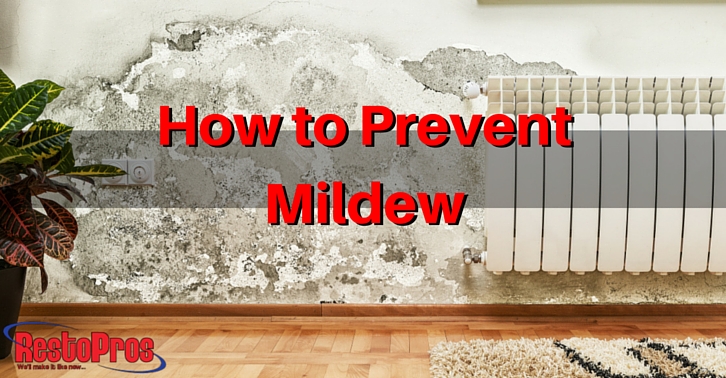 Both mold and mildew are fungal growths that coat surfaces with a nasty, spore-spewing substance when the humidity and temperature reach the correct levels. But where mold tends to be black or green and spongy, mildew is often a white, powdery substance that coats multiple objects. And, unlike the commonly-held belief, mildew doesn’t just rest on organic substances like paper and fabric either. Glass, tile, and plastics can all become growing spots for mildew, which can allow it to spread to more easily damaged or porous substances.
Both mold and mildew are fungal growths that coat surfaces with a nasty, spore-spewing substance when the humidity and temperature reach the correct levels. But where mold tends to be black or green and spongy, mildew is often a white, powdery substance that coats multiple objects. And, unlike the commonly-held belief, mildew doesn’t just rest on organic substances like paper and fabric either. Glass, tile, and plastics can all become growing spots for mildew, which can allow it to spread to more easily damaged or porous substances.
Primary Locations
So where are you going to be likely to find mildew? Anywhere you’d likely find mold growing. Dark corners where high humidity is prevalent. Mildew grows quickly when the environment is right, which means closed off laundry hampers, basement corners, and cabinets near water sources or leaky plumbing are all prime suspects for mildew.
Any room that suffers from high humidity, either during storms or during use – think basements during a storm or a bathroom during a hot shower – is a hotspot for mildew. Surfaces that are hidden from the light are perfect as well. Vinyl wallcoverings and flooring that’s hidden beneath appliances should be checked every quarter to make sure that no mildew has begun growing in these spaces.
Any areas of the home that are poorly ventilated can be a cause for concern as well. Ventilation makes it difficult for mold and mildew to grow because it helps to keep surfaces dry via evaporation. Once mildew has already begun to grow, a ventilated area (without dehumidification) will only serve to spread spores faster.
Prevention and Control
So now you know where to find mildew, what can you do about preventing its growth in the first place? Unsurprisingly, many of the practices you need to follow for preventing water and mold damage apply here.
Fix Moisture Problems – Leaks, drips, and excess condensation are all sources for mildew.
Increase Air Circulation – Moving air helps to control temperature and dry out surfaces, making things difficult for mildew to develop. This includes during or after showers or while cooking. Use the vent fans to circulate humid air away from surfaces and keep humidity levels down.
Remove Wet Items – This isn’t just from water leaks and damage. Any wet items need to be replaced or dried quickly. That includes laundry in your hamper. Don’t let them sit and don’t leave water pooling anywhere.
Use a Dehumidifier – Humidity control is key. If you aren’t planning on running your air conditioner regularly (strange as that may be during the summer), buy a dehumidifier for humid rooms to deal with the excess and keep things at or below 45% humidity.
Keep Your Home Clean – Strange as it may sound, cleaning up your home and general house maintenance are key to preventing mold. Replacing air filters and dusting help to mitigate dust and mold spores. General cleaning and maintenance will also force you to check trouble spots and keep them clear of any contaminants or current growth while the infestations are small.
Throw Away the Unsalvageable – Don’t keep moldy items. If mildew has completely taken over something, it’s often best to simple toss it and replace it. Porous items such as wood, insulation, or sheetrock should all be replaced quickly. Favorite clothes and even some heirloom items are often not worth the cost of cleaning. Irreplaceable memories should be sent for restoration if you really need to keep them. But never let moldy items just sit around in the hope that drying out the air will fix the problem.
Don’t forget to follow RestoPros on Facebook, Twitter, LinkedIn, and Google+ for new Updates, News, and Discounts!
